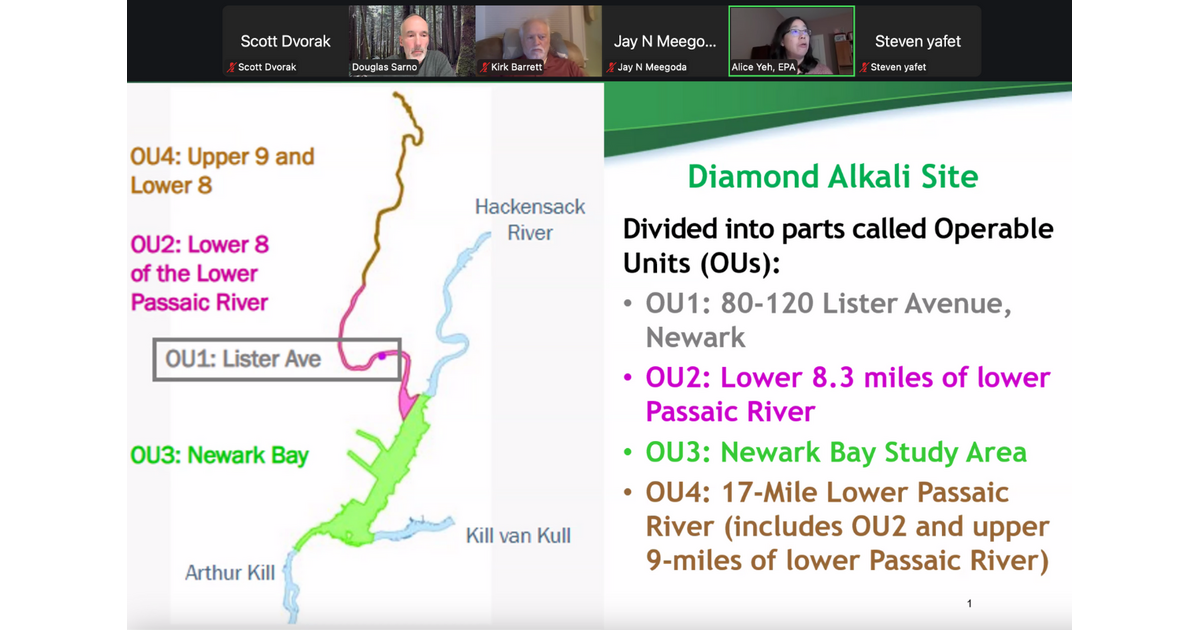UPDATE: Negotiations for the cleanup of the Diamond Alkali Superfund site in Newark are moving at a snail’s pace as officials grapple with corporate reorganizations and a federal government shutdown. The urgency of this situation is underscored by the continued monitoring of toxic contaminants at the site, which poses significant risks to local communities.
Recent discussions have stalled primarily due to Occidental Chemical Corporation’s (OCC) corporate restructuring and the ongoing federal government shutdown, leaving residents and environmental advocates anxious about the future of the cleanup. The Environmental Protection Agency (EPA) has confirmed that negotiations began in May 2024 to identify responsible parties for the cleanup funding, yet progress has been minimal.
The Diamond Alkali Superfund site, located at 80-120 Lister Ave., has a notorious history of hazardous waste, including the production of dioxin and other toxic chemicals dating back to the 1940s. This site is part of the larger Lower Passaic River Study Area and has been on the EPA’s Superfund National Priorities list since 1984.
During a community advisory meeting on November 17, 2024, EPA officials reported ongoing monitoring efforts at the site. Eugenia Naranjo, the remedial project manager, revealed that there is still “an unacceptable risk of contaminants in Newark Bay,” stressing the need for immediate action. “We are working on the feasibility study for the Newark Bay study area,” Naranjo stated.
Despite the alarming findings, including high levels of dioxin and other hazardous substances discovered in the soil and groundwater, no cleanup work has commenced. The EPA’s updated cleanup plan for the river includes a substantial 2.5 million cubic yards of contaminated sediment slated for dredging.
Community members are understandably frustrated. Ana Isabel Baptista, chair of the Passaic River Community Advisory Group, lamented, “This is a Superfund site listed in the early 1980s, and here we are many decades later, still waiting for the initiation of this cleanup.” She emphasized that no dredging or cleanup will take place until a negotiated agreement is reached.
The negotiations have been further complicated by OCC’s recent announcement of a $9.7 billion acquisition of its chemical business by Berkshire Hathaway. This deal, expected to finalize in the fourth quarter of 2025, raises concerns about liability and funding for the cleanup. CAG member Douglas Sarno expressed fears that corporate changes could hinder accountability: “We are just concerned that whoever ends up with the liability has the funds to handle it.”
The EPA is under pressure to finalize agreements with potentially responsible parties to commence cleanup efforts, which include constructing necessary facilities for sediment processing and water treatment. Alice Yeh, remedial project manager for the Lower Passaic River, highlighted ongoing data collection, stating, “We’ve had five boats in the river for the last few weeks collecting sediment samples.” However, the status of the negotiations remains unclear.
As concerns mount over the slow progress, community members and local officials are left in a state of uncertainty. “Nothing is going to happen on this river in terms of dredging and cleanup until there’s a negotiated agreement,” Baptista reiterated during the meeting. The upcoming reports from the EPA on site behavior and risk assessments, due by the end of this year, are highly anticipated but offer no immediate resolution.
The urgency surrounding the Diamond Alkali cleanup cannot be overstated, as the toxic legacy of this site continues to threaten the health and safety of Newark residents. Local leaders and environmental advocates are calling for swift action to ensure that responsible parties fulfill their obligations and protect the community from further harm.







